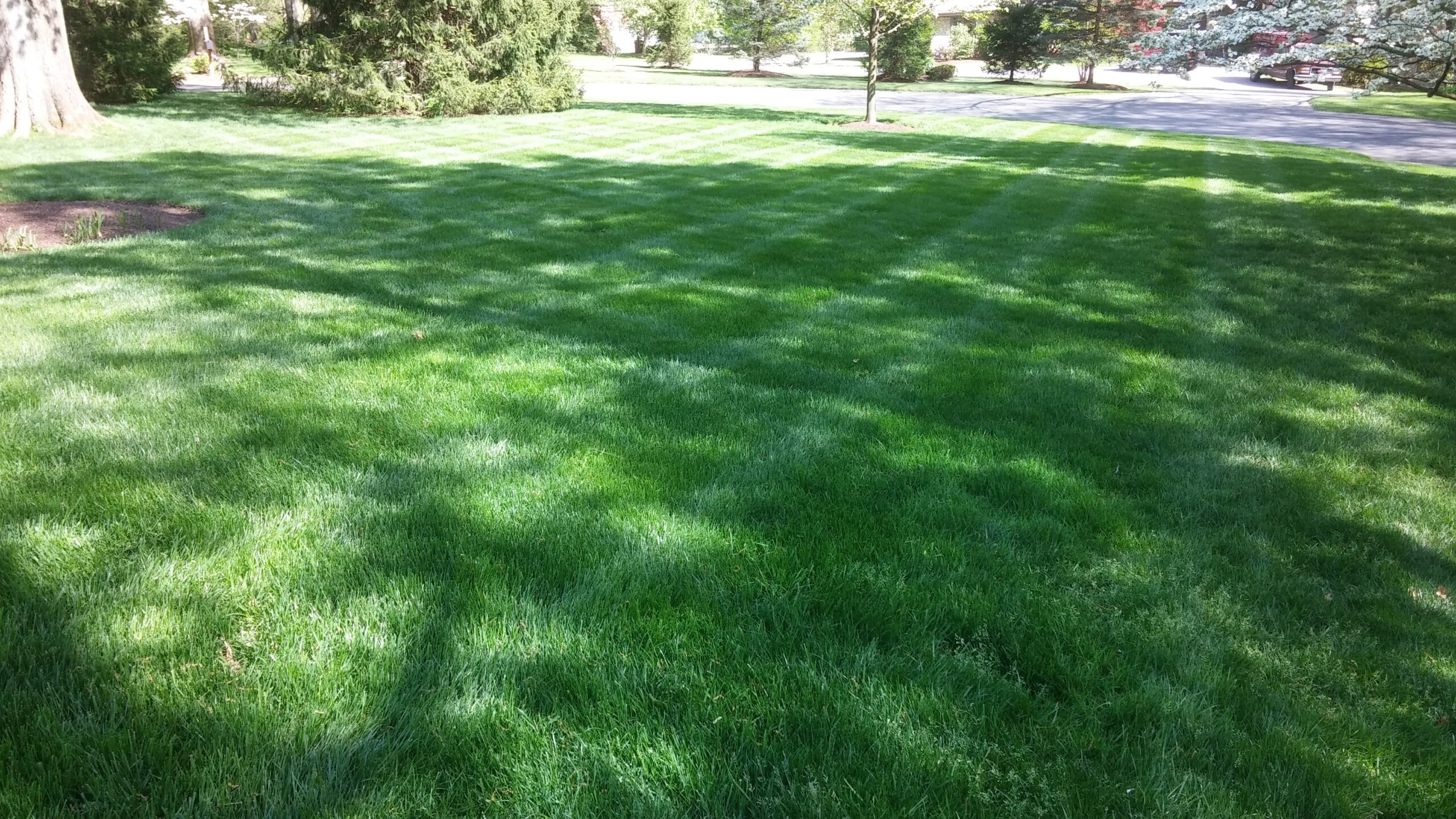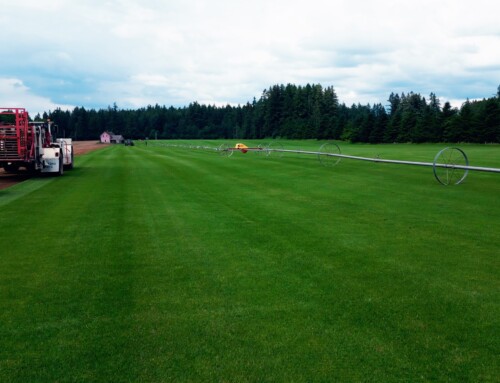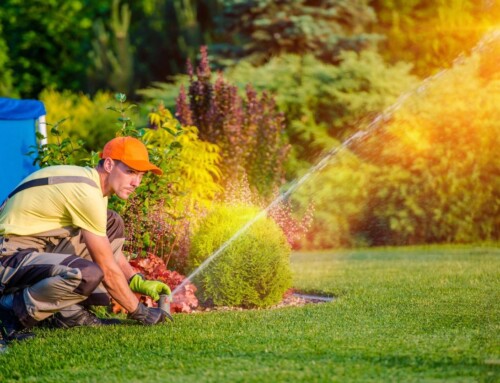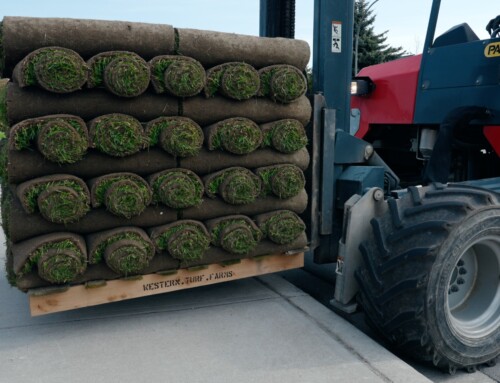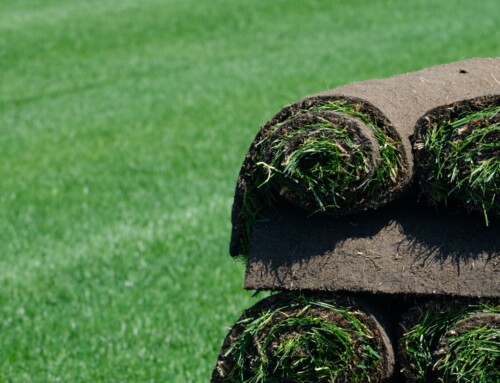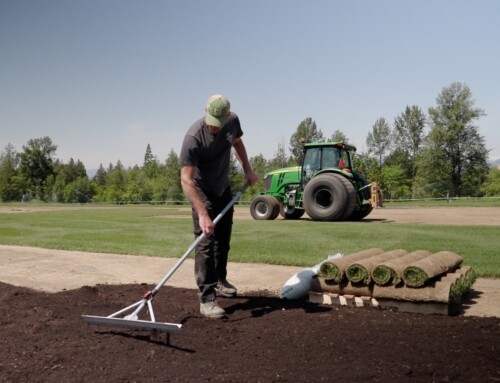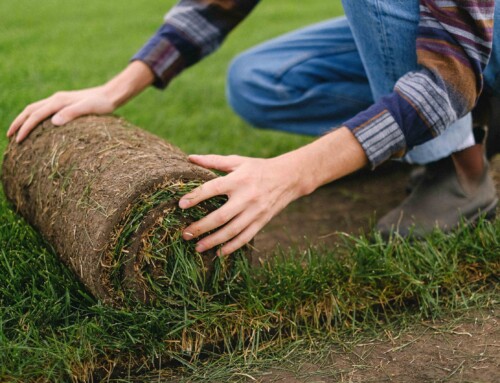For many homeowners the yard is a multi-purpose space that sees a lot of action during the year: soccer games, cook-outs, and pets to name a few. Over time residential lawns can start to look thin and ragged as wear and tear take their toll, but what can be done to keep them healthy and looking their best?
Here at Western Turf Farms, our experts recommend that homeowners give their lawns a bit of tender-loving-care each fall by performing some basic fall lawn maintenance: dethatching, aerating, and overseeding.
Dethatching
Did you know that most blades of grass live for only an average of 45-60 days? Over time, this natural dieback results in a layer of light brown organic matter building up between the soil and green grass of your lawn. A small amount of thatch (which is considered to be any layer that is ½ an inch or less) is beneficial, acting as an organic, slow-release fertilizer that feeds your lawn throughout the year. Too much thatch can make it difficult for water to penetrate to grass roots and can also create a breeding ground for harmful pests and diseases.
With cool season grasses such as Kentucky bluegrass, perennial Ryegrass, and Fescue fall is an ideal time to check for thatch build-up and, if needed, to dethatch. The process of dethatching is as simple as grabbing a hand rake or dethatching rake and quickly raking up the excess thatch by hand – but it can be rough on the lawn. Homeowners should minimize the impact of dethatching by doing so in fall when cool season grasses are thriving, and will recover quickly.
For homeowners considering dethatching a large area, we recommend contacting a professional lawn care company. These knowledgeable folks can provide a second opinion and often own dethatching equipment which makes large projects more manageable.
Aerating
Did you know that soil isn’t as solid as it seems? Instead, soil is actually a complex mixture of organic matter, minerals, liquids, and gasses that create a matrix of pores and pockets. The grasses that make up our lawns take advantage of those open spaces to extend their roots in search of nutrients and water.
Over time, soils can lose those all important pockets of air and water as the combined forces of weight and gravity from regular foot traffic and heavy rains cause soils to compact – making it much harder for grass roots to find nutrients or exchange gas.
To counteract this, our experts recommend that homeowners core aerate in the fall on a yearly or bi-yearly basis. More commonly referred to as aerating, core aeration is the process of using a hand tool or machine to pull up small plugs of grass and soil at regular intervals throughout the lawn, with the plugs being thrown back on top of the grass. While it may sound odd, this process relieves soil compaction and increases both gas exchange and water availability to the lawn’s roots, promoting healthy grass growth in the coming year.
Overseeding
A single blade of grass lives for such a short amount of time, residential lawns need to continually produce new blades faster than old blades of grass die off in order to stay thick and lush. After several years of expending energy in constant growth mature lawns begin to slow down, producing new grass at much slower rates. Rather than ripping out the lawn and starting over or simply living with a thin, ragged lawn, our staff recommends that homeowners overseed each time they core aerate.
Overseeding is the process of spreading grass seed over areas of already established lawn. It’s a popular industry method that ensures the lawn is a blend of older, established grass and new, fast growing grass that will quickly fill in bare spaces and replenish the lawn. Homeowners who overseed will enjoy fuller, more resilient lawns in the coming year.
Overseeding an entire lawn doesn’t have to be a daunting task. Lawn care professionals use spreaders to quickly and efficiently spread both grass seed and fertilizer over lawns.
With the cool season grasses such as Kentucky Bluegrass, perennial Ryegrass and Fescue, late summer and early fall is the ideal time to overseed. This will allow the new grass 2-3 months to establish before temperatures drop too low and the lawn goes dormant for winter. The following spring will provide another 2-3 months to develop stronger root systems before summer heat sets in.
DIY Dethatching, Core Aerating, and Overseeding
For homeowners who are considering doing their own fall lawn maintenance, our staff has a few tips, tricks, and guidelines to start with:
Step 1. Mow the lawn a little shorter than normal.
This may sound strange but it is an important first step. Grass seed won’t germinate unless it lands on the soil and has enough sunlight. By cutting the lawn a little shorter, homeowners can increase the odds their seed will grow.
Tip: Don’t mow again until after the new grass seed germinates and reaches at least 2 inches in height ( approximately 2-3 weeks, depending on the seed type). Homeowners who mow sooner will run the risk of picking up and displacing the loose seed, resulting in uneven spread and lower germination rates.
Step 2. Dethatch – but only if needed.
Step 3. Core Aerate.
Tip: Avoid aerating within 3 feet of tree trunks to minimize the risk of damaging surface level roots.
Step 4. Overseed
Using a spreader, broadcast grass seed over the lawn. While various types of grass seed can be purchased at several home and garden centers, such as RONA and Home Depot, we recommend that homeowners explore the premium grass blends found at Western Turf Farms. Our staff is always happy to provide product recommendations and advice based on a homeowner’s needs and goals.
After overseeding the lawn, homeowners will need to keep the soil moist by lightly sprinkling the lawn with water 2-3 times a day throughout the required germination period. Once the grass begins to sprout, homeowners will be able to water less frequently and more deeply.
Tip: Many homeowners keep an eye on the weather when planning their fall lawn maintenance, and will try to overseed when the forecast calls for a week of rain to reduce the need for sprinklers.
The Takeaway
Healthy, thick lawns aren’t just beautiful, they’re also more resilient to environmental extremes, pests & diseases, and even the general wear and tear of daily life. By making the investment in regular fall lawn maintenance routine, homeowners can reap the benefit all year long. To learn more about our grass seed and other products, give our office staff a call at. 888-888-7072!

